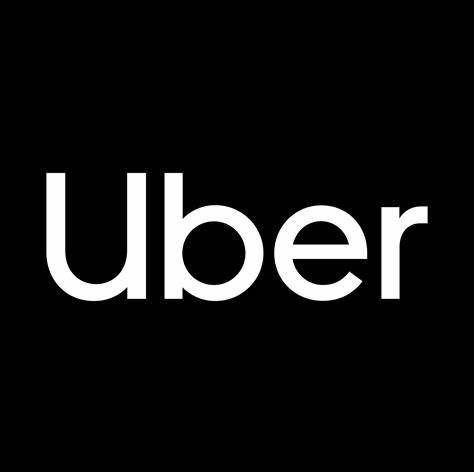Uber Earnings Review – February 7, 2024

Uber beat bookings estimates by 1.3% & beat bookings guidance by 1.6%. It also beat revenue estimates by 1.8% and beat monthly active user (MAU) estimates by 1.4%. It roughly met foreign exchange neutral (FXN) Y/Y growth guidance across its segments. A business model change in the UK made it classify some sales & marketing spend as a contra-revenue item. This slowed delivery & mobility revenue growth by about 700 bps Y/Y. Comps will normalize in 2024.
- Mobility bookings rose 29% Y/Y FXN; delivery bookings rose 19% Y/Y FXN; freight bookings fell 17% Y/Y FXN.
- Mobility revenue rose 31% Y/Y FXN; delivery revenue rose 4% Y/Y FXN; freight revenue fell 17% Y/Y FXN.
- Mobility take rate was 28.7% vs. 27.8% Y/Y; delivery take rate was 18.3% vs. 20.5% Y/Y.



Source: Brad Freeman – SEC Filings, Company Presentations, and Company Press Releases
Profitability
Uber beat EBITDA estimates by 5.2% and beat EBITDA guidance by 6%. GAAP EBIT was 26% ahead of estimates and GAAP earnings per share (EPS) was well ahead of estimates due to equity investment gains. When excluding these gains, it earned $0.20 per share vs. $0.17 expected.
- Cost of revenue was 16.1% of volume vs. 17.3% Y/Y.
- Operations & support costs were 1.7% of volume vs. 1.8% Y/Y.
- Sales & marketing costs were 2.4% of volume vs. 3.6% Y/Y.
- R&D costs were 1.3% of volume vs. 1.5% Y/Y.
- G&A costs were steady at 1.5% of volume.

FCF = Free Cash Flow; bps = basis points; 1 basis point = 0.01%.

Source: Brad Freeman – SEC Filings, Company Presentations, and Company Press Releases
Corporate G&A + Platform R&D was $625 million vs. $580 million Y/Y. This cost is not allocated to a specific segment, but is deducted from company-wide EBITDA.
Balance Sheet
- $5.4 billion in $ & equivalents.
- $6.1 billion in investments.
- $9.5 billion in debt.
- Share count rose 3% Y/Y. The team all but told us that it would announce a buyback at its investor day next week.
Q1 Guidance & Valuation
Uber’s bookings guidance is 0.8% better than expected while its EBITDA guidance is 3.2% better than expected.
Uber trades for 40x 2024 earnings and 32x 2024 free cash flow. Earnings are expected to grow by 44% Y/Y on a non-GAAP basis and by 198% Y/Y on a GAAP basis. Free cash flow is expected to grow by 60% Y/Y.
“We expect to demonstrate further leverage over the coming quarters… There’s a tremendous runway for more leverage… Free cash flow will keep ramping over the coming years.” – CFO Prashanth Mahendra-Rajah
“Customer activity remained strong across the world… We look forward to healthy top line growth in 2024.” – CEO Dara Khosrowshahi
Call & Release Highlights
The Winning Formula:
Uber continues to foster better marketplace supply/demand balance. It now has 6.8 million monthly drivers vs. 6.5 million Q/Q and is distancing itself further from the competition in terms of driver preference. This is despite continuing to rationalize and diminish driver incentives. How is it threading this needle? Thanks to more demand, which leads to less down time for its drivers. Specifically, and despite fewer incentives, this led to 24% Y/Y earnings growth for drivers; they now make $33 per hour on average in the USA.
Why does demand flock to Uber to give it this driver value advantage? Aside from the verb-fueled virality of the brand, I think it comes from three key edges. First, the aggressive incentive playbook that Uber used to build early scale teed them up for success. It allowed Uber to secure leading driver supply, which means lower surcharges and wait times for consumers. It means far better service and value. While some can criticize its founder for irrational growth spend in Uber’s early days, it was this growth spend that jump-started the flywheel. Without this jumpstarting, Uber could not be briskly cutting costs today while continuing to accelerate demand. It needed to lay a rock-solid foundation, or a moat, before getting to this point of competitive strength… so it did. As the consumers flocked to the platform, drivers were given a more & more pressing reason to stay. Drivers staying meant more consumers, and so on.
Secondly, Uber’s broader product suite naturally drives down churn rates. More product cross-selling means more loyal customers and higher lifetime value. Specifically, cross-selling triples order frequency vs. users of just one Uber product.
Uber neatly ties its unmatched product suite into the UberOne membership to keep customers as engaged as possible. This quarter, UberOne membership rose to 19 million vs. 15 million sequentially while these members made up 30% of its mobility/delivery volume vs. 23% Y/Y. That’s a large reason why trips per consumer rose 8% Y/Y and set new records for both mobility and delivery. It’s rolling out more intuitive UberOne upselling to guest checkout as we speak to keep 50% Q/Q UK growth momentum rolling. The membership is also now live in 25 countries as it gears up to debut more “delight and surprise” offerings this year.
Cross-selling and lower churn mean higher revenue quality and lower customer acquisition cost. A large chunk of delivery traffic is free to Uber as it comes from mobility customers and vice versa. Lyft doesn’t enjoy this same reality. The differentiation has given Uber a best-in-class margin profile, the strongest balance sheet and the lowest cost of capital in its industry. That means it can more profitably invest in more innovation and growth to stay ahead.
Looking to 2024, Uber is fixated on making itself more of a daily use case through more product iterating and UberOne value creation. It’s also focused on properly leveraging its massive first party data lead. More consumer product interactions and a giant customer base mean Uber has more complete customer data profiles. This means it can more effectively surface promotions, enhance marketing efficacy for merchants, more thoughtfully match riders and drivers and more precisely allocate driver incentives.
“Outside of the US, we continue to be encouraged by the progress we have made to broaden our leading competitive position across our top international markets.” – Dara
Delivery Highlights:
Uber grew delivery market share in all 10 of its largest delivery markets. Overall, this was delivery’s fastest growth rate in 2 years with more growth coming from volume expansion rather than price hikes vs. the Y/Y period. The company added Big Lots and Sprouts as new delivery partners this quarter while it expanded its newer Domino’s relationship to the UK and Taiwan too. It debuted real-time customer support and completed its Cornershop M&A integration. This makes UberEats a one-app, native experience in Latin America.
To help support its grocery and retail business within delivery, Uber added multi-merchant ordering for adjacent stores, which could help to juice order frequency over time. Up-selling a bottle of wine to a restaurant order could become a demand driver considering 14% of Uber’s food delivery customers already use its grocery and retail channels. The grocery & retail business is now at an annual bookings run rate of $7 billion and is enjoying 40% Y/Y growth. It will continue to lose money in 2024, but losses are set to shrink, margins are set to improve and management is confident in this being a future profit driver. Still, that won’t happen this year.
Uber Direct, its private label delivery service, added KFC and BurgerKing during the period while also expanding with McDonald’s and 7-11 in Japan.
Advertising:
Uber wanted to reach a $1 billion annual revenue run rate for advertising in 2024. It reached $900 million this quarter; the team thinks it’s going to do a lot better than $1 billion this year. Uber now has 550,000 advertisers on the platform (+75% Y/Y and +23.5% Q/Q) and continues to deliver a robust 8x return on ad spend (ROAS) for its buyers.
Most of its revenue here to date has been from small businesses. It’s now investing in better segmentation, targeting and measurement tools to cater to the big boys. That and sponsored listings within its budding grocery business are two compelling growth levers to look forward to.
This advertising pursuit has already been credited with a chunk of the margin expansion that delivery is enjoying. Just like for Amazon, this is a sky-high margin tool to layer onto the rest of Uber’s marketplace.
Mobility:
- Launched its Taxi product in Washington DC, Paris, Cancun and Victoria. London Black Cabs will soon launch on Uber.
- Uber Rent debuted across Belgium, France, Germany, Spain and more European countries.
- Expanded Uber Valet to 9 U.S. markets. This allows customers to order a rental car, have it dropped off and then have it picked up when they’re done.
- Latin America and Asia-Pacific were cited as the two geographic demand standouts.
- Estimated time of arrival and surcharge rates continue to improve through platform-level investments.
Driver engagement rose 10% Y/Y as they followed robust demand and responded positively to new product safety introductions like ride recording.
Non-UberX, or Uber’s new mobility bets, rose 80% Y/Y to reach 14% of total mobility volume. This includes shared rides, motorcycles, taxis and higher-end products like Reserve too. Specifically, shared rides became its 4th mobility vertical to cross $1 billion in annual volume.
Freight:
While the freight market remained challenging, there were two silver linings. First, Uber added “several new enterprise customers” to its Transportation Management System (TMS) offering. It’s also seeing “glimmers of light in terms of spot freight rates,” which would be fantastic news for demand. Several of Uber’s competitors have shuttered during this nasty part of the freight cycle. Uber Freight continues to survive, deepen its product suite and set itself up to thrive as the cycle turns.
Final Notes:
- Dara reiterated what he has long said about the driverless-vehicle revolution. Commercial fleets will need to optimize demand to make those fleets as efficient and profitable as possible. Uber is the consumer demand network to enable maximum utilization.
- Uber for Business (U4B) is seeing “nice strength” so far in 2024.
Take
This was a great quarter. Margins continue to explode higher, it continues to take more market share everywhere and it continues to round out its product suite to further distance itself from the pack. Despite all of this, it still trades at a forward PEG ratio under 1x. This company is entering that “wonderfully boring and easy to own” category through the sheer consistency of elite execution. This report was simply more of the same, with forward commentary pointing to this freight train continuing to roll. I have no interest in taking any profits here.
The stock could easily chop around for a while after an explosive move over the last several months. To be candid, I don’t really care. What is important to me? The financial data seamlessly reiterates that I want Uber as an anchor holding in the portfolio.










